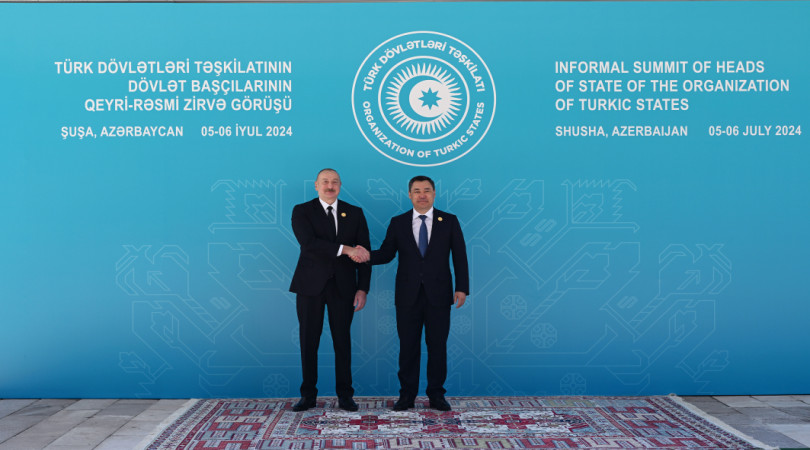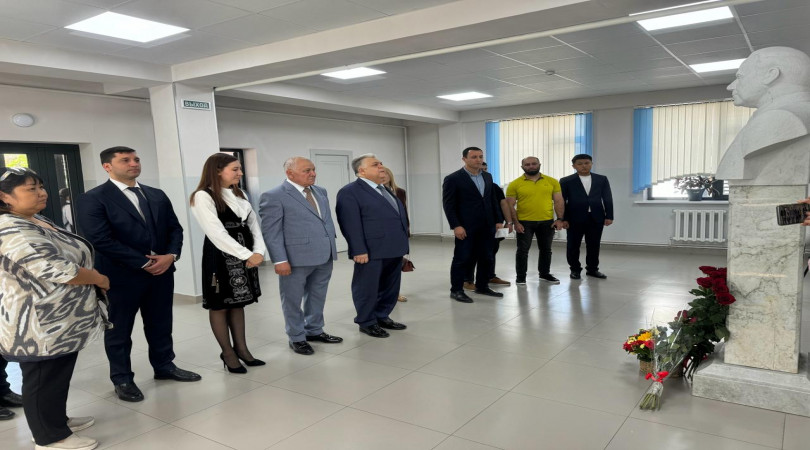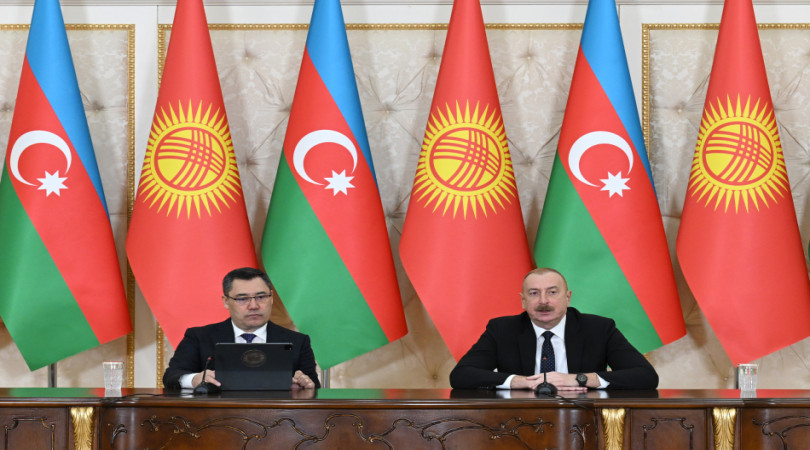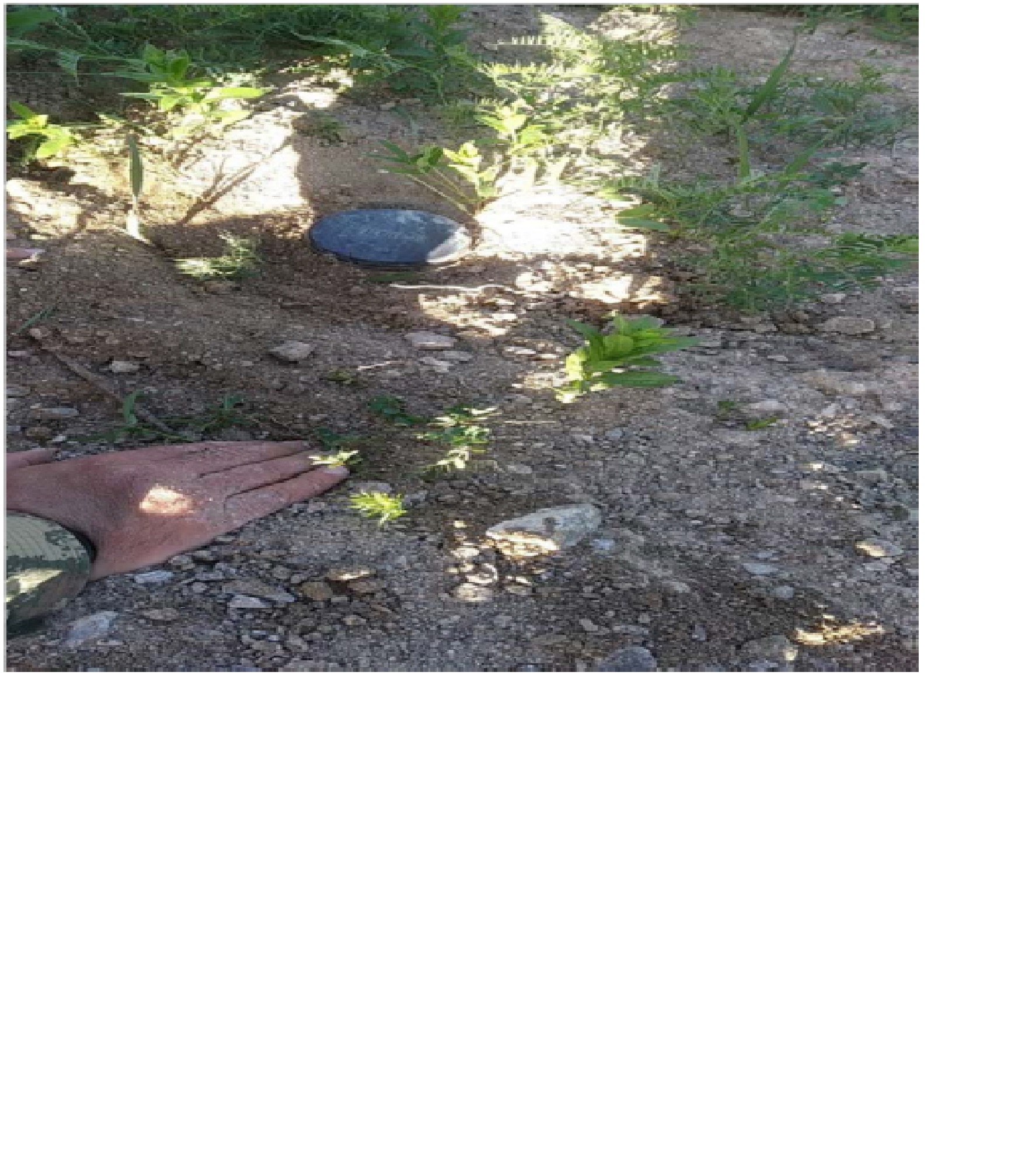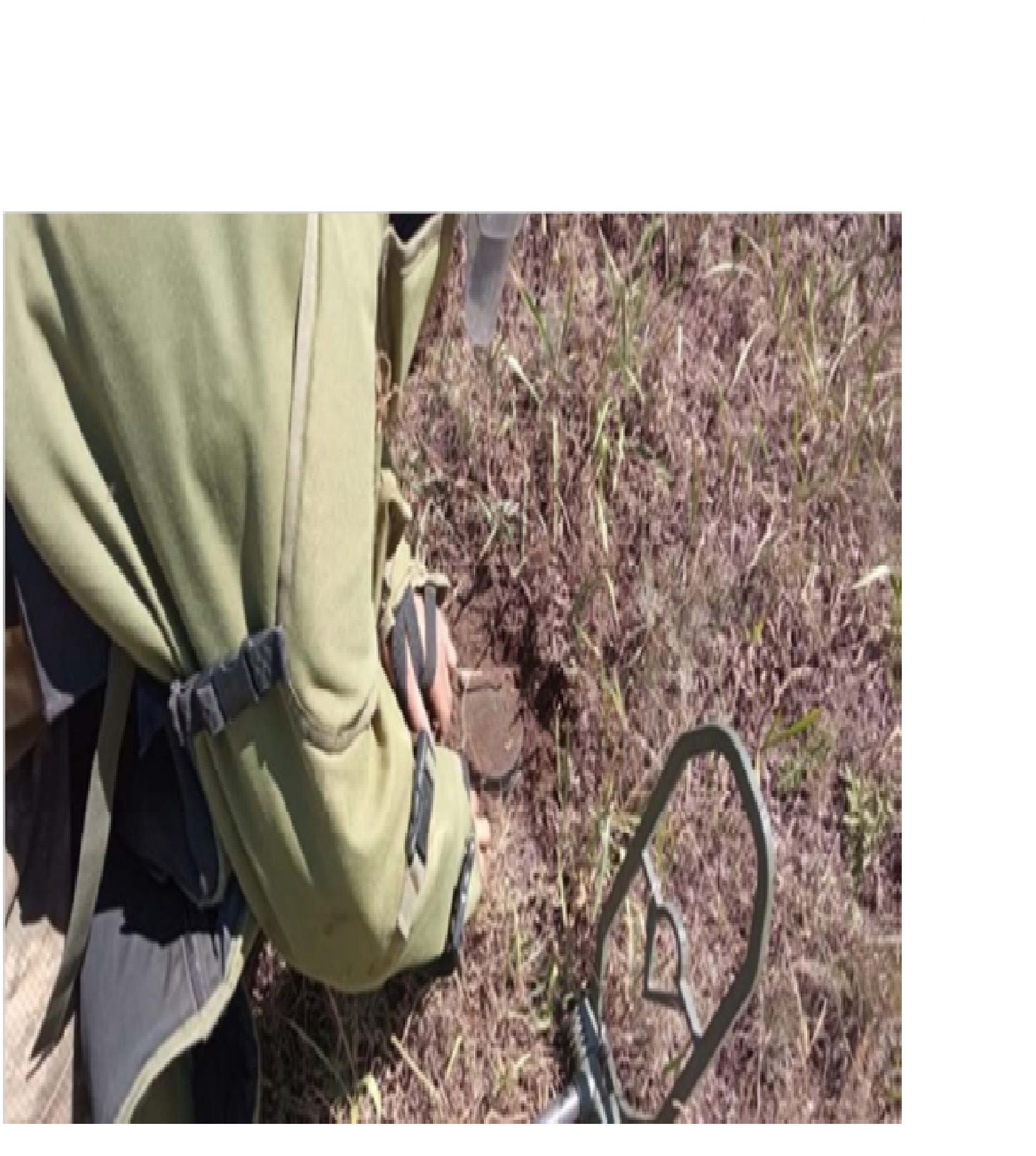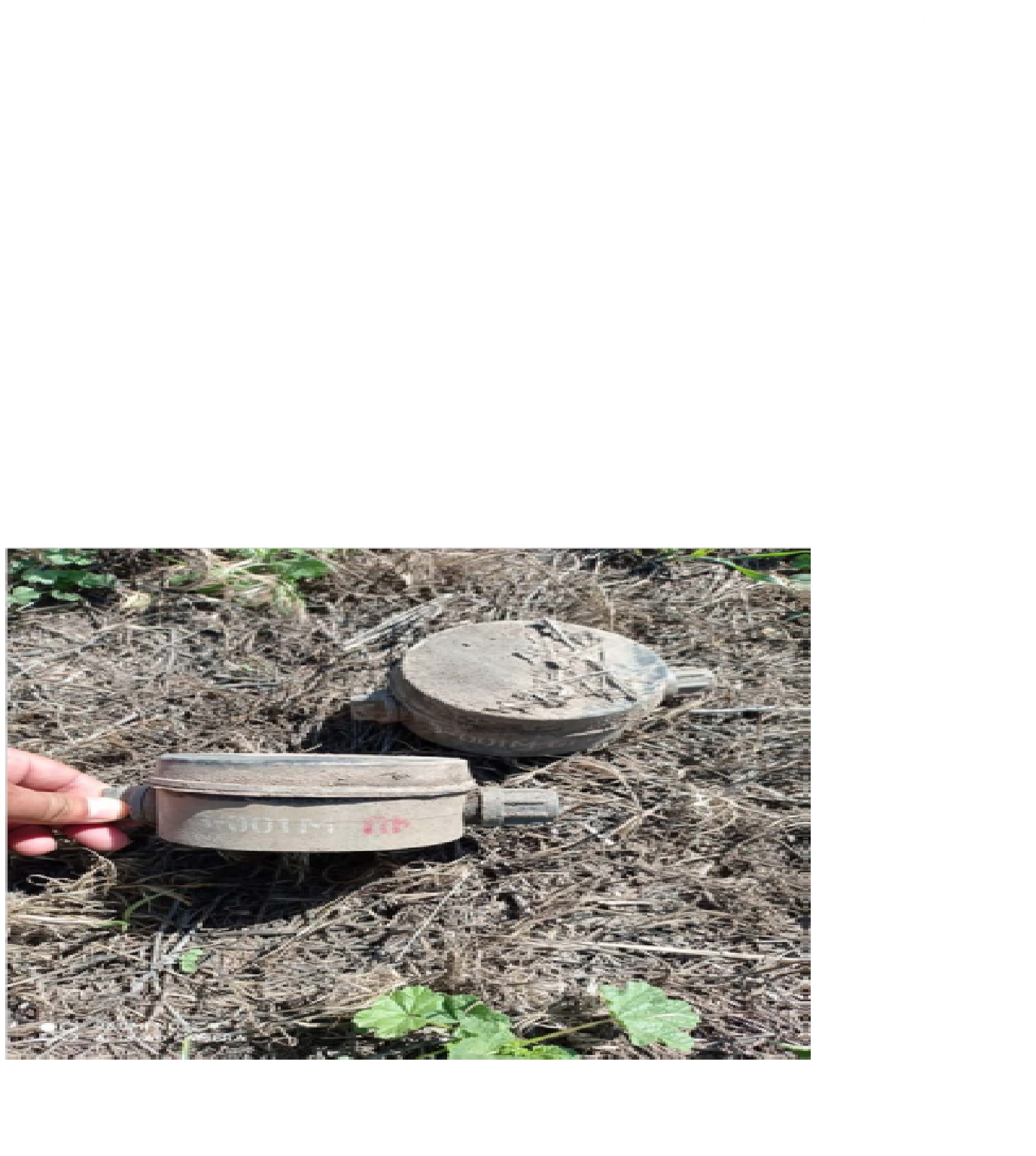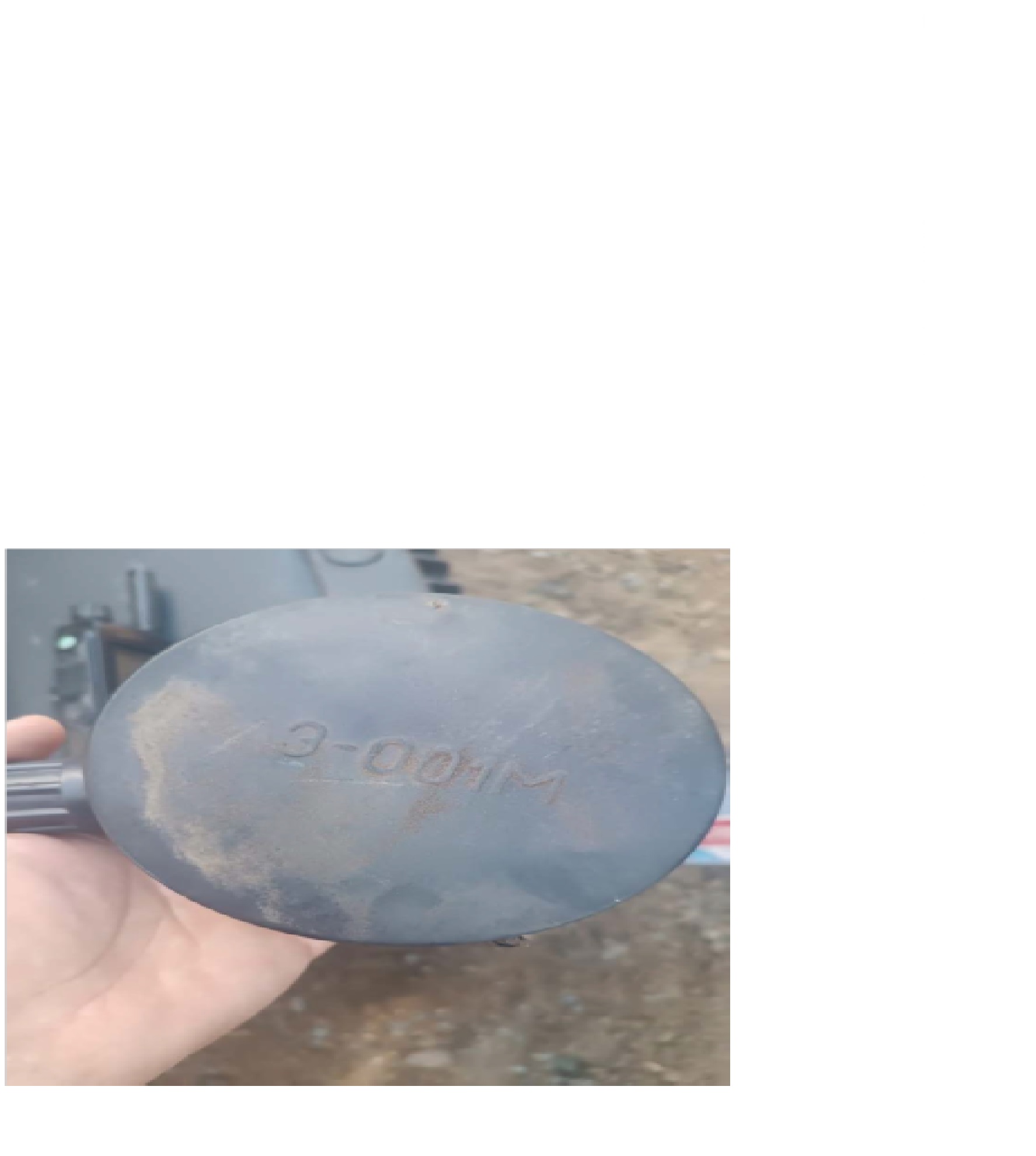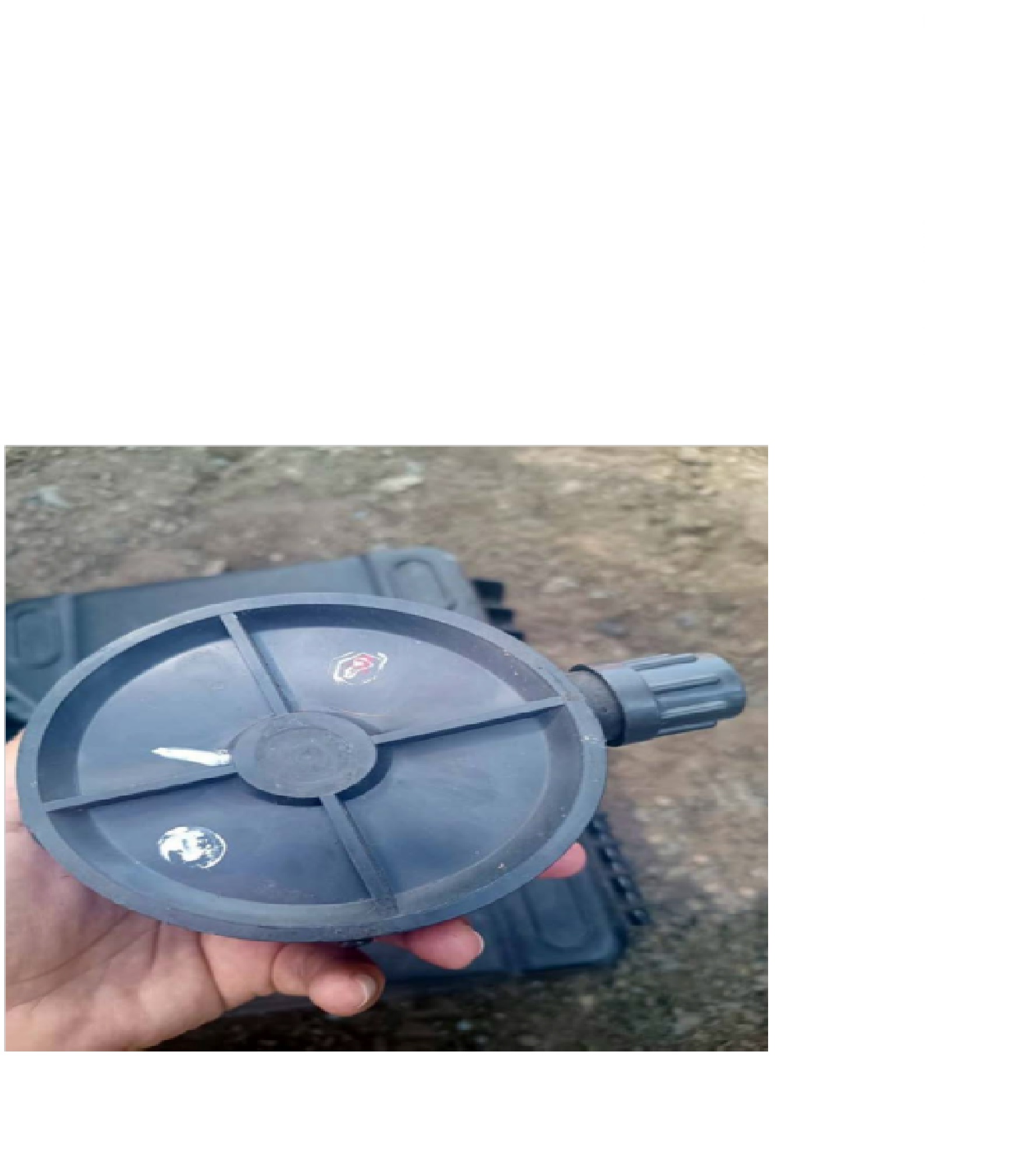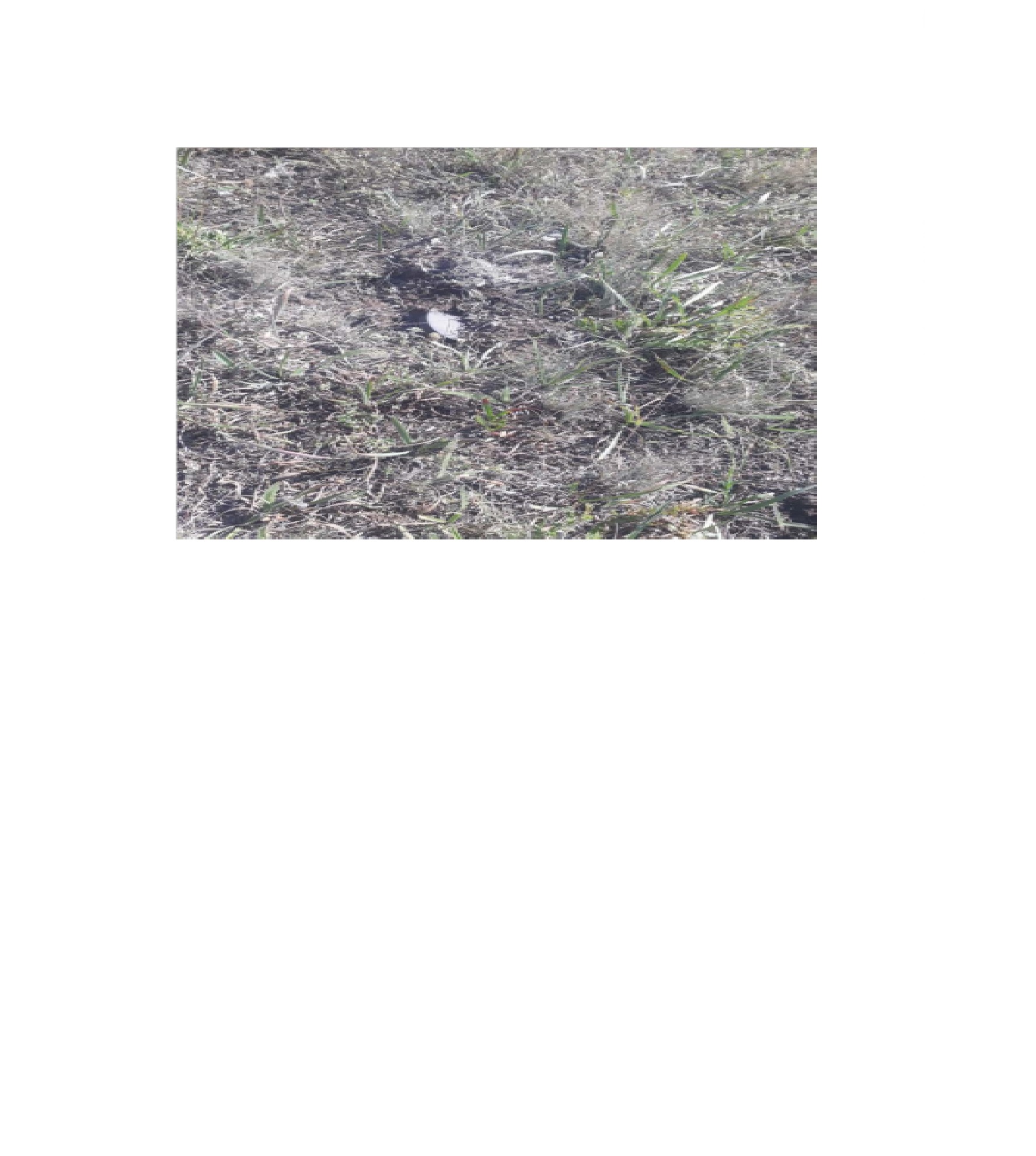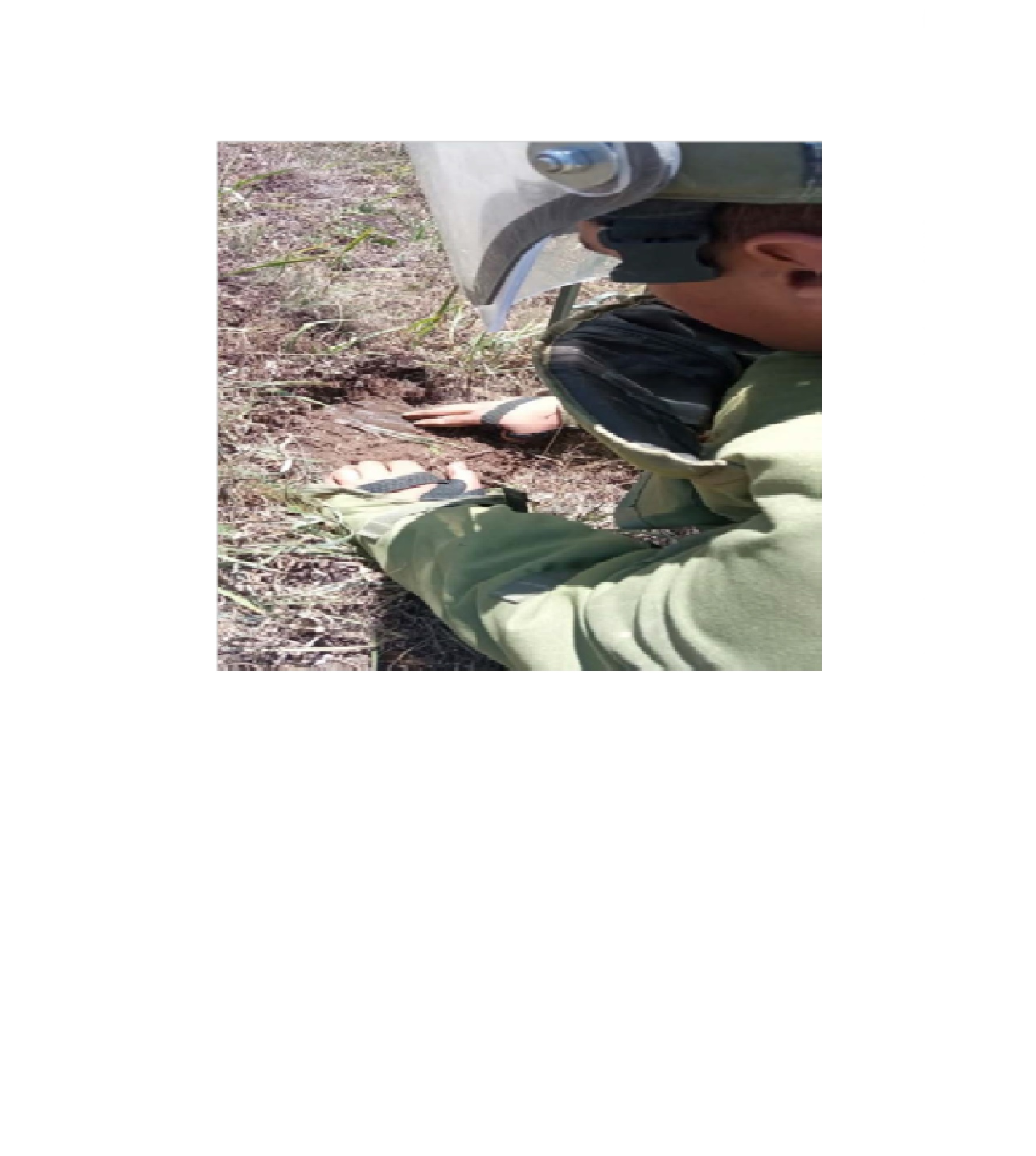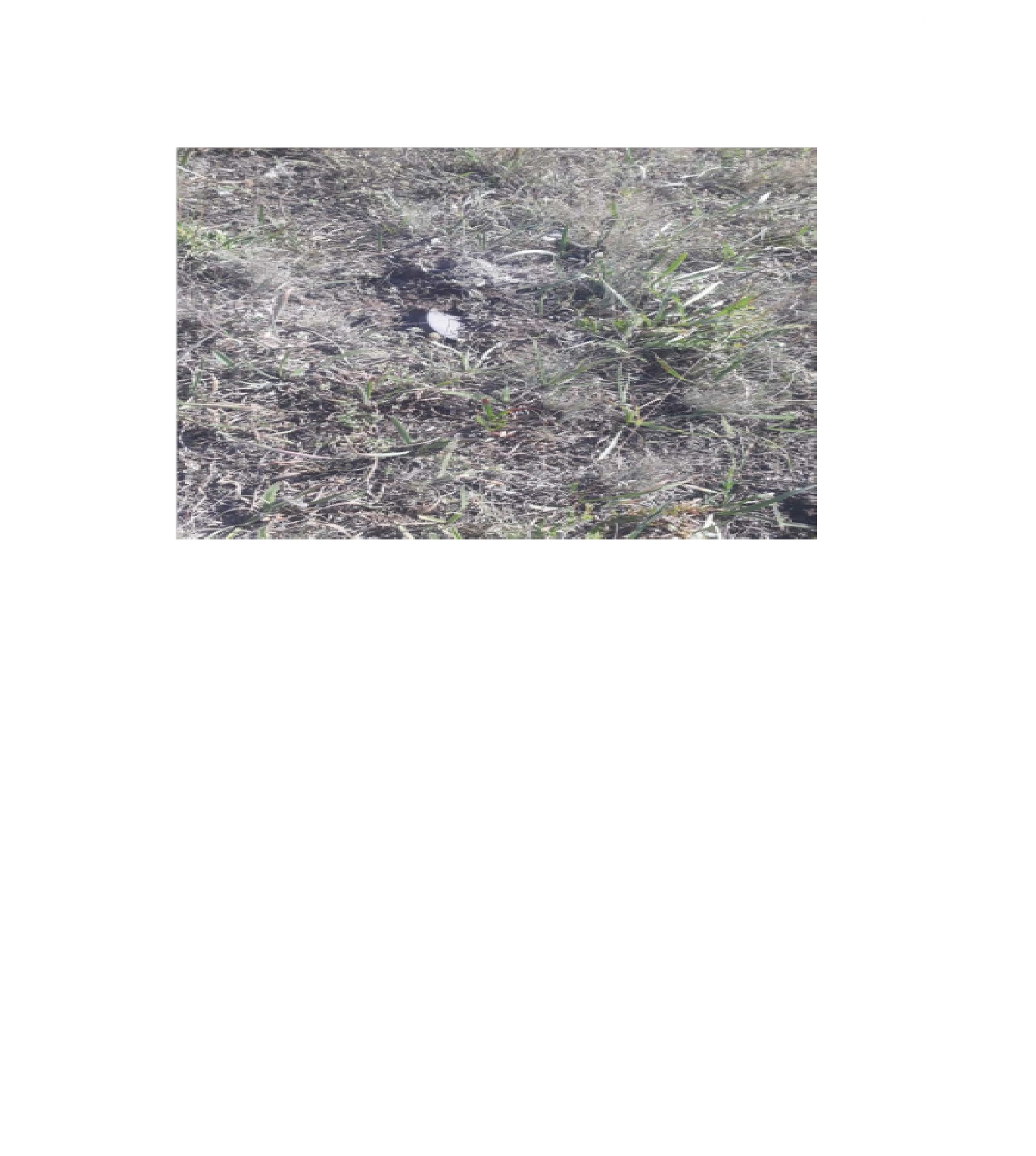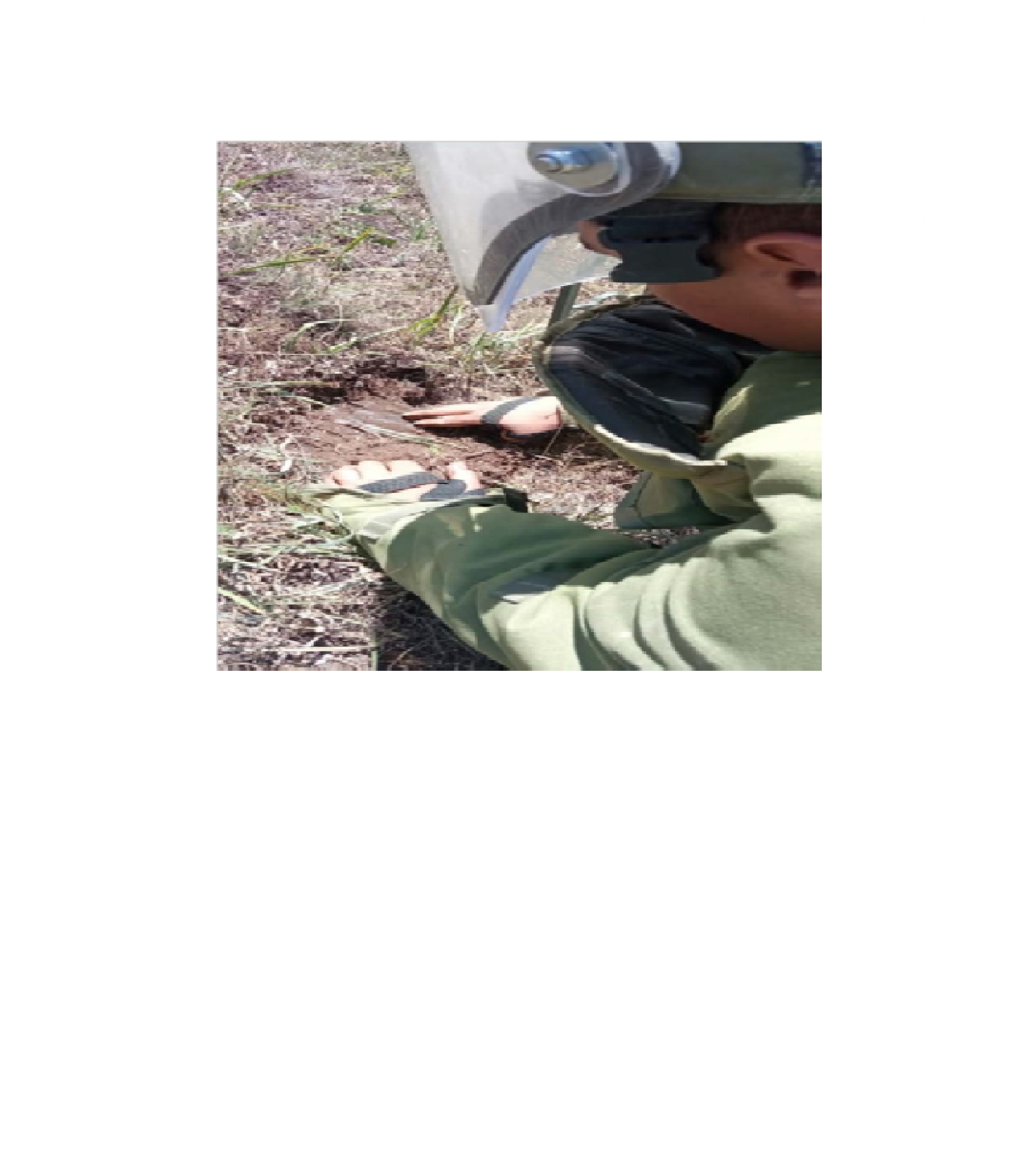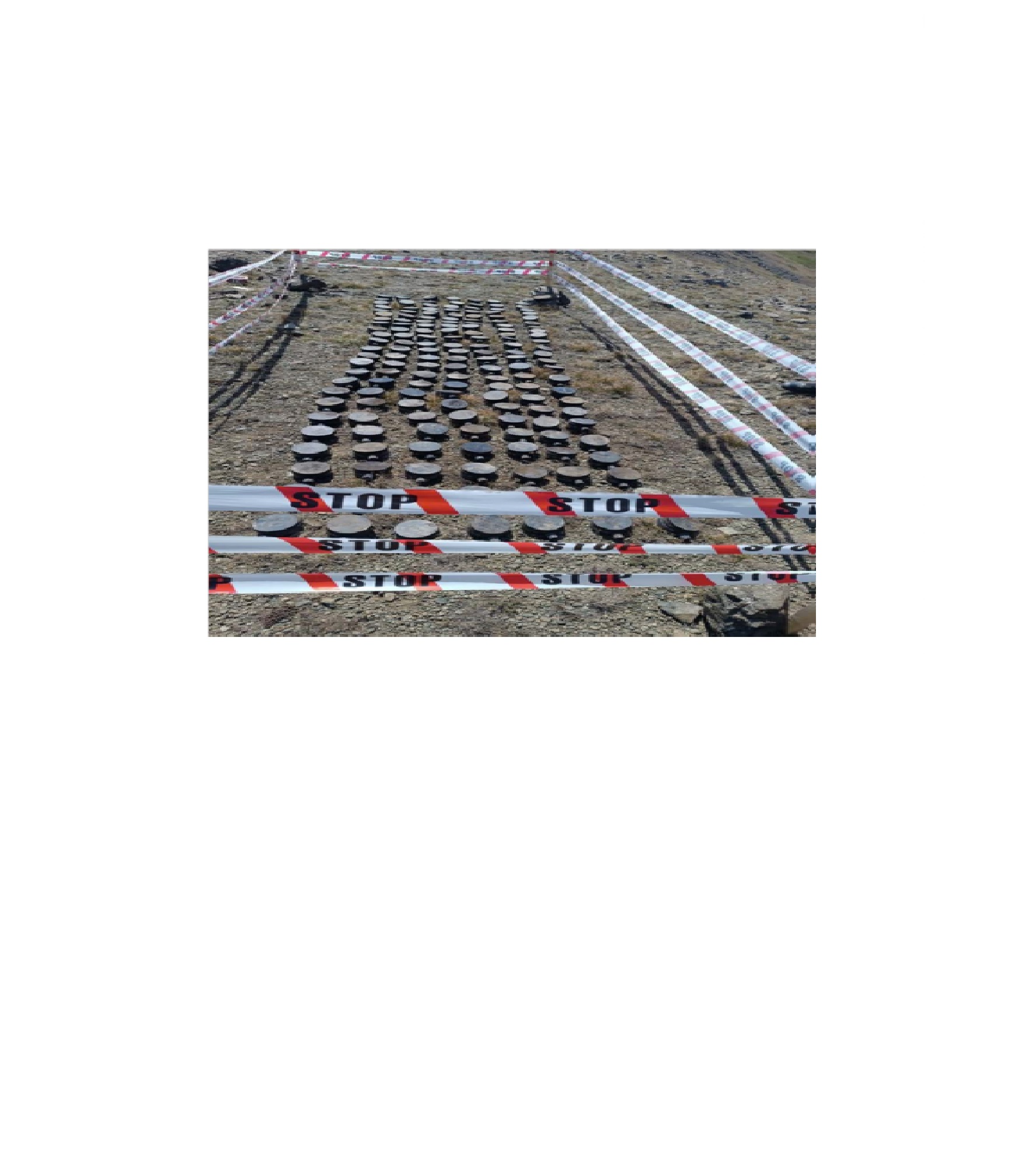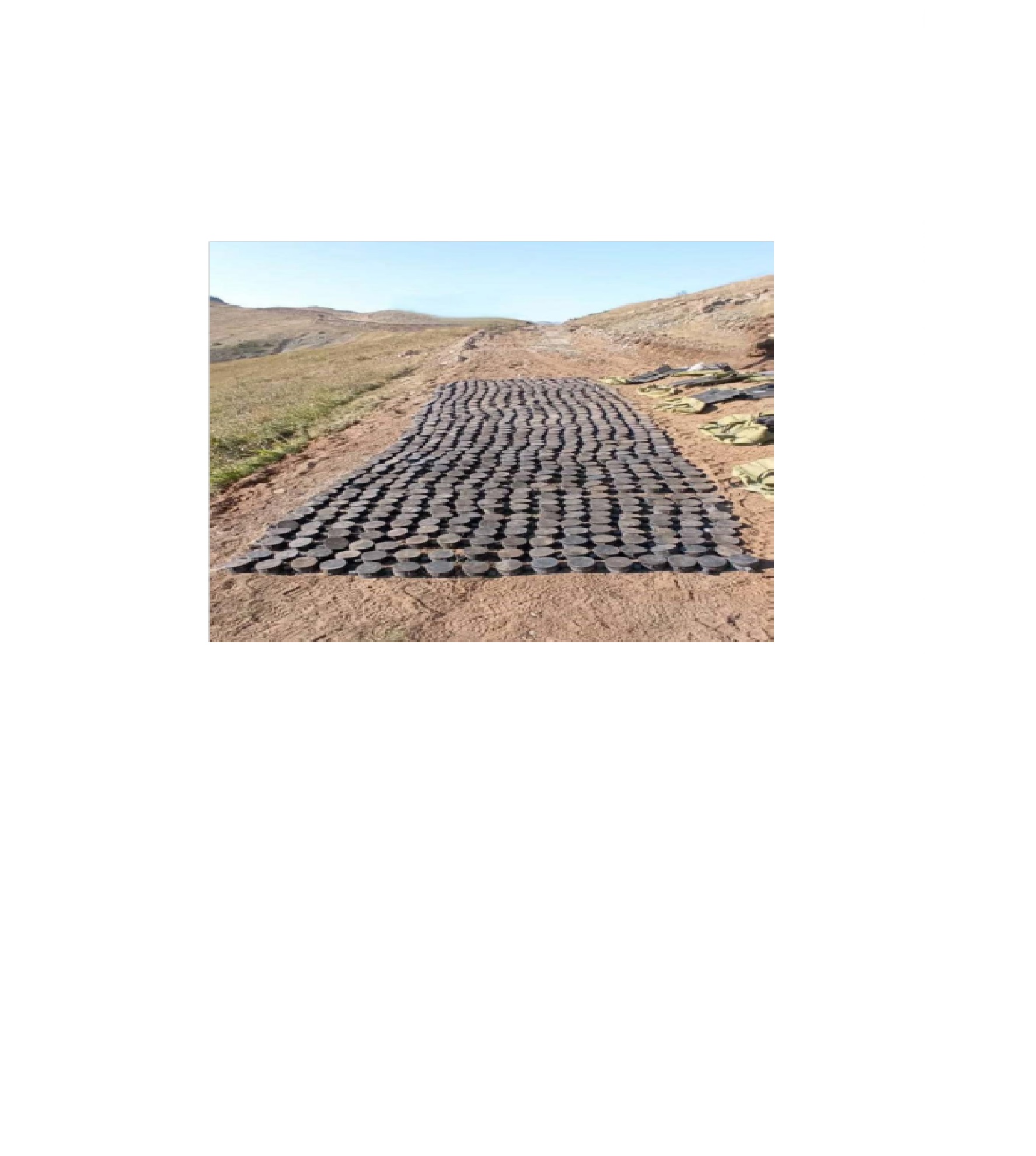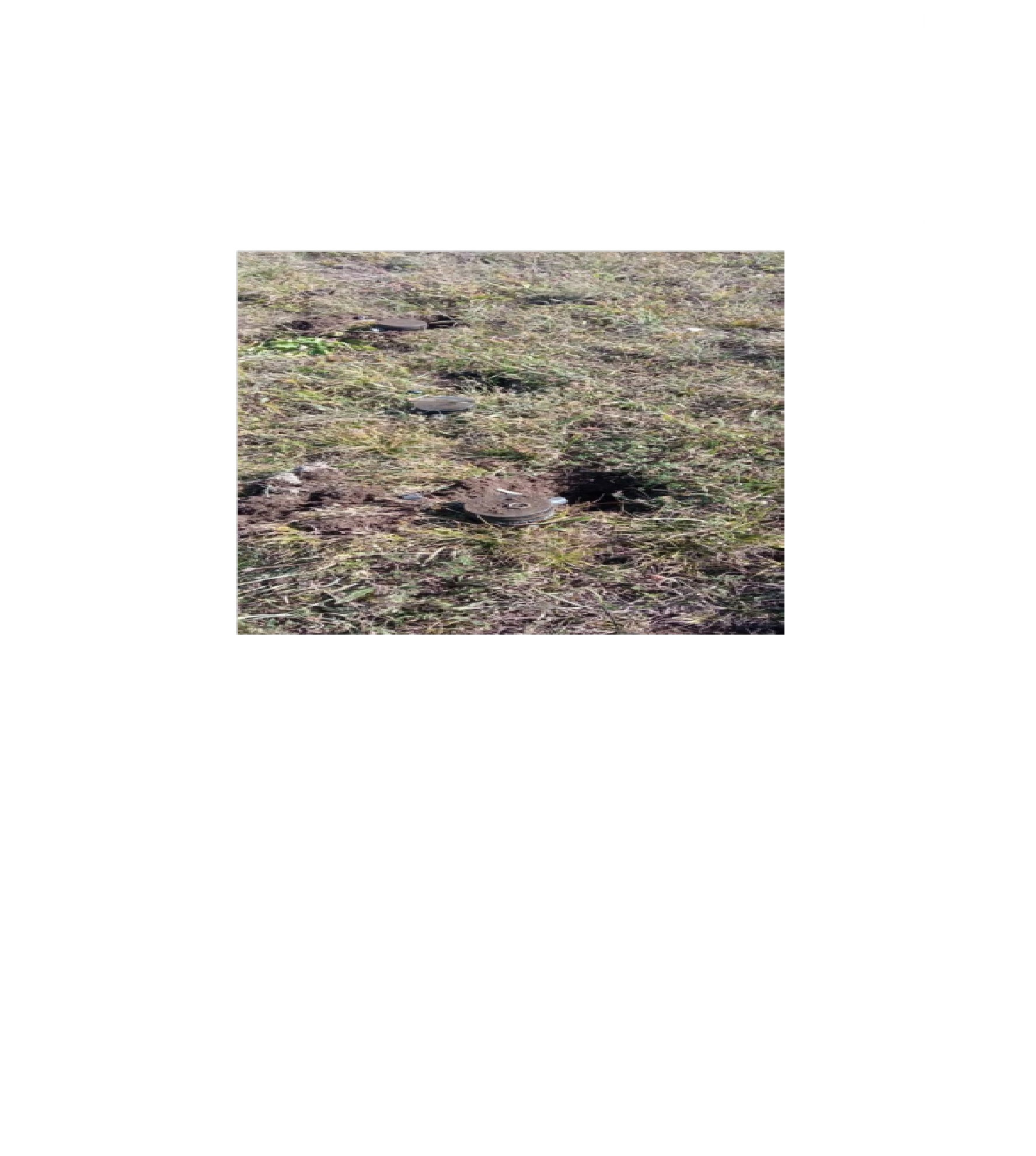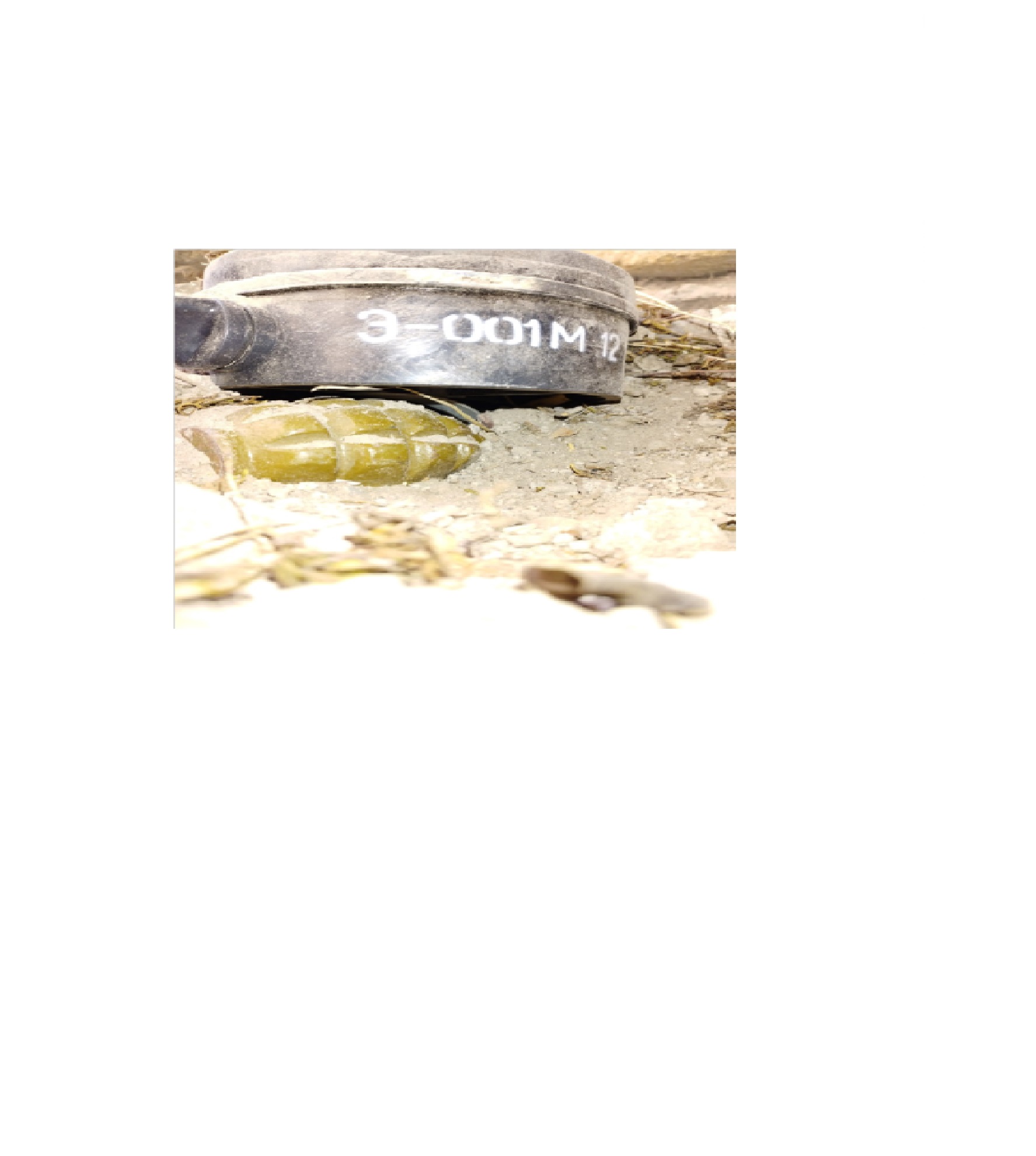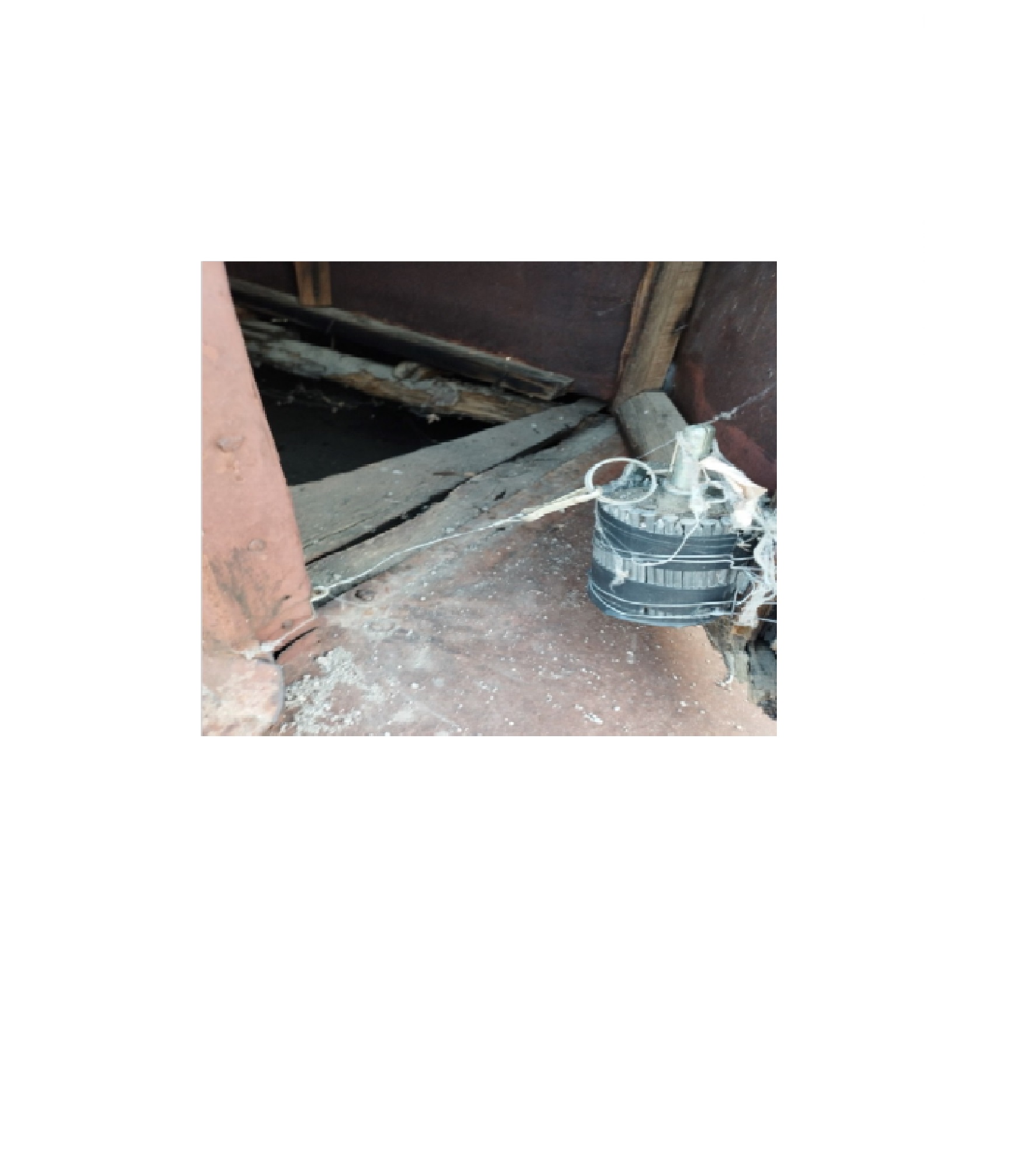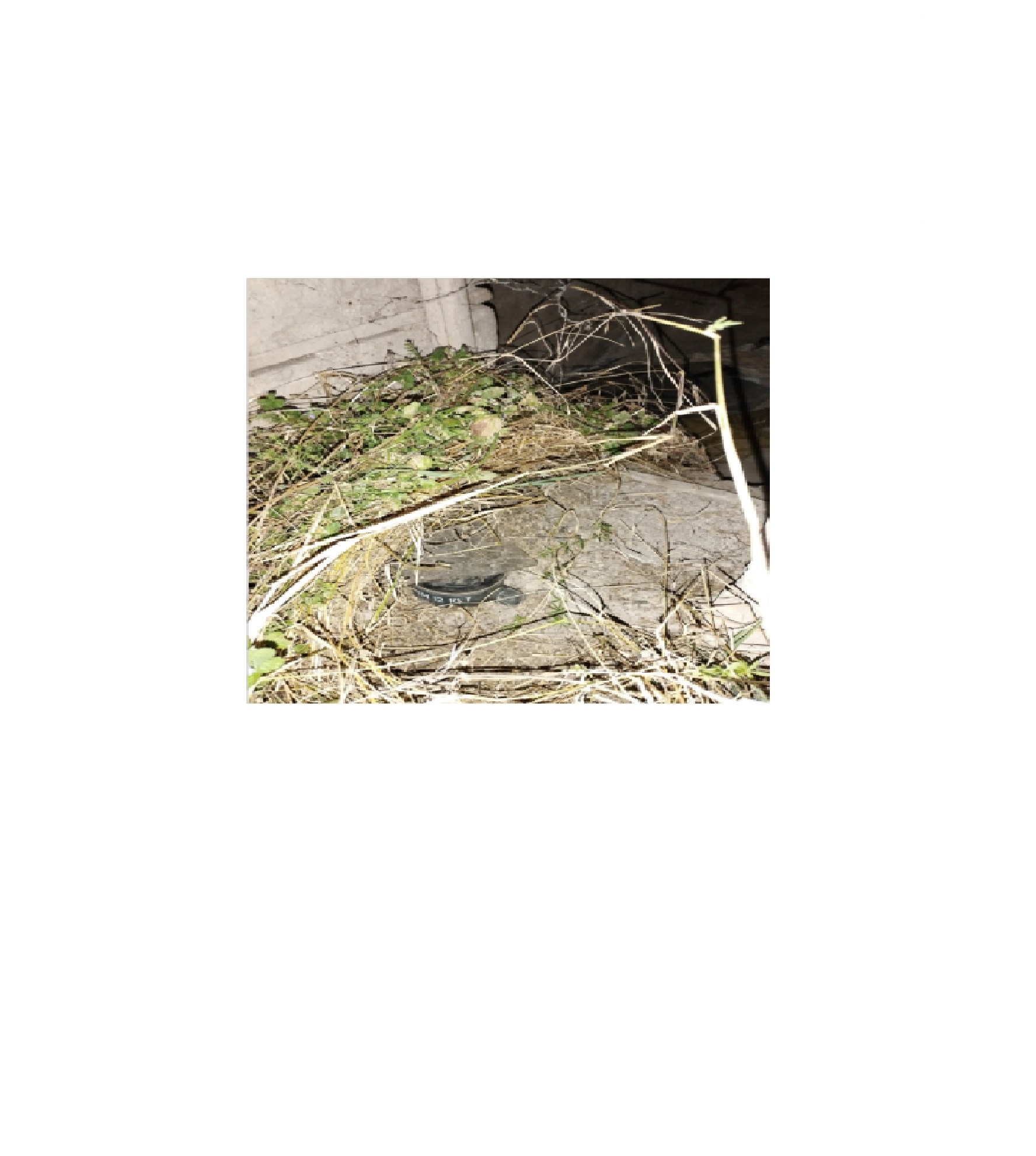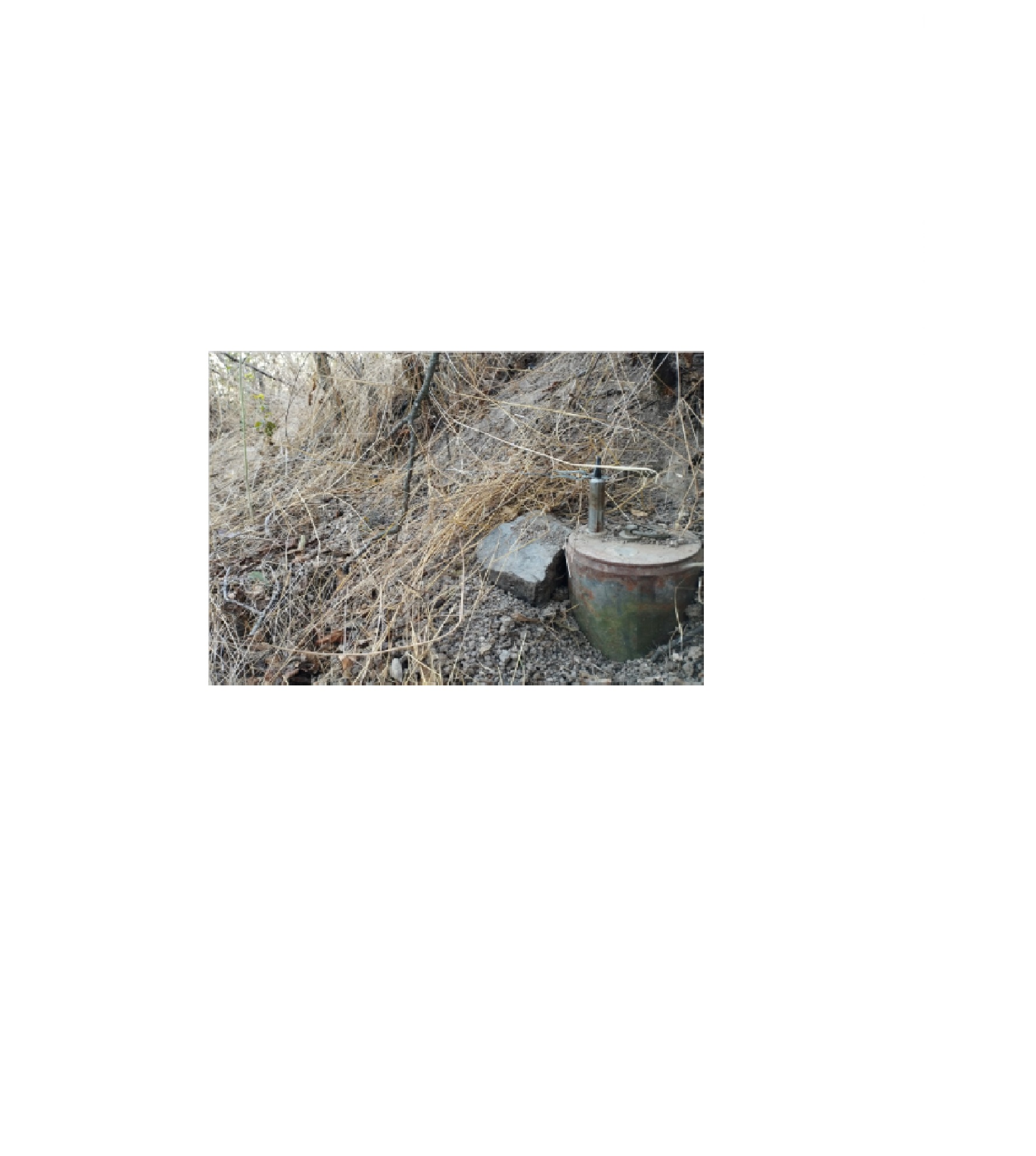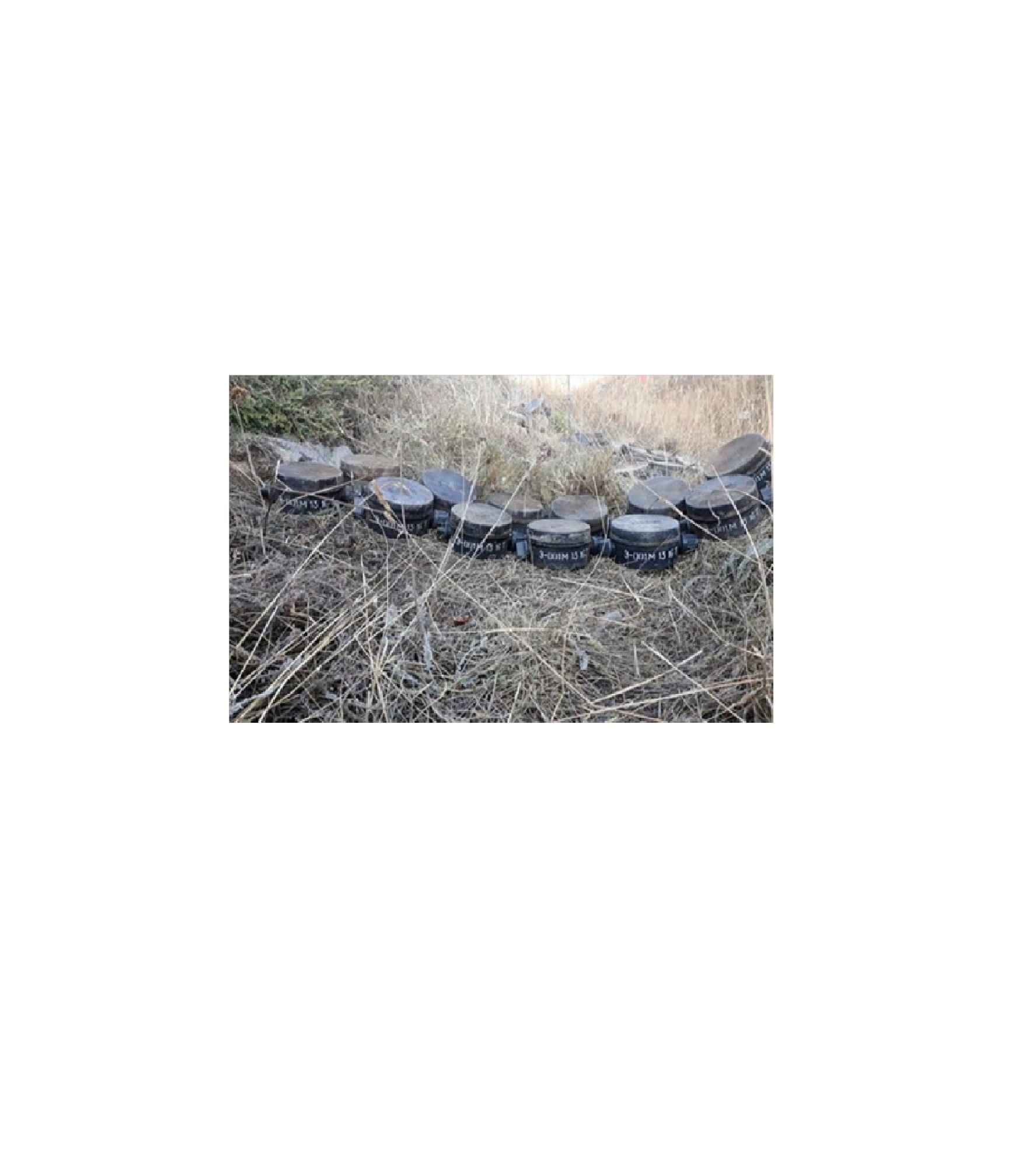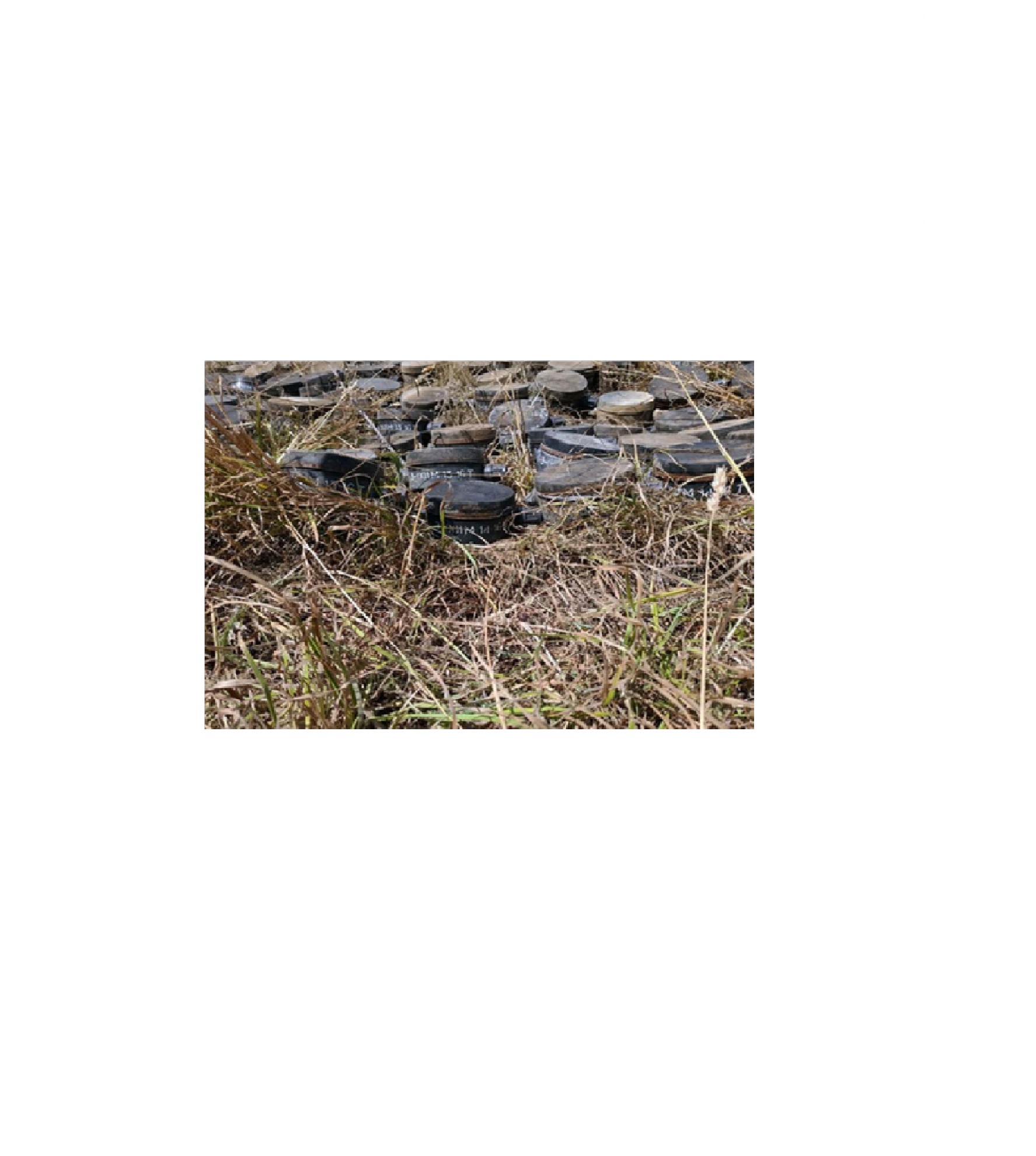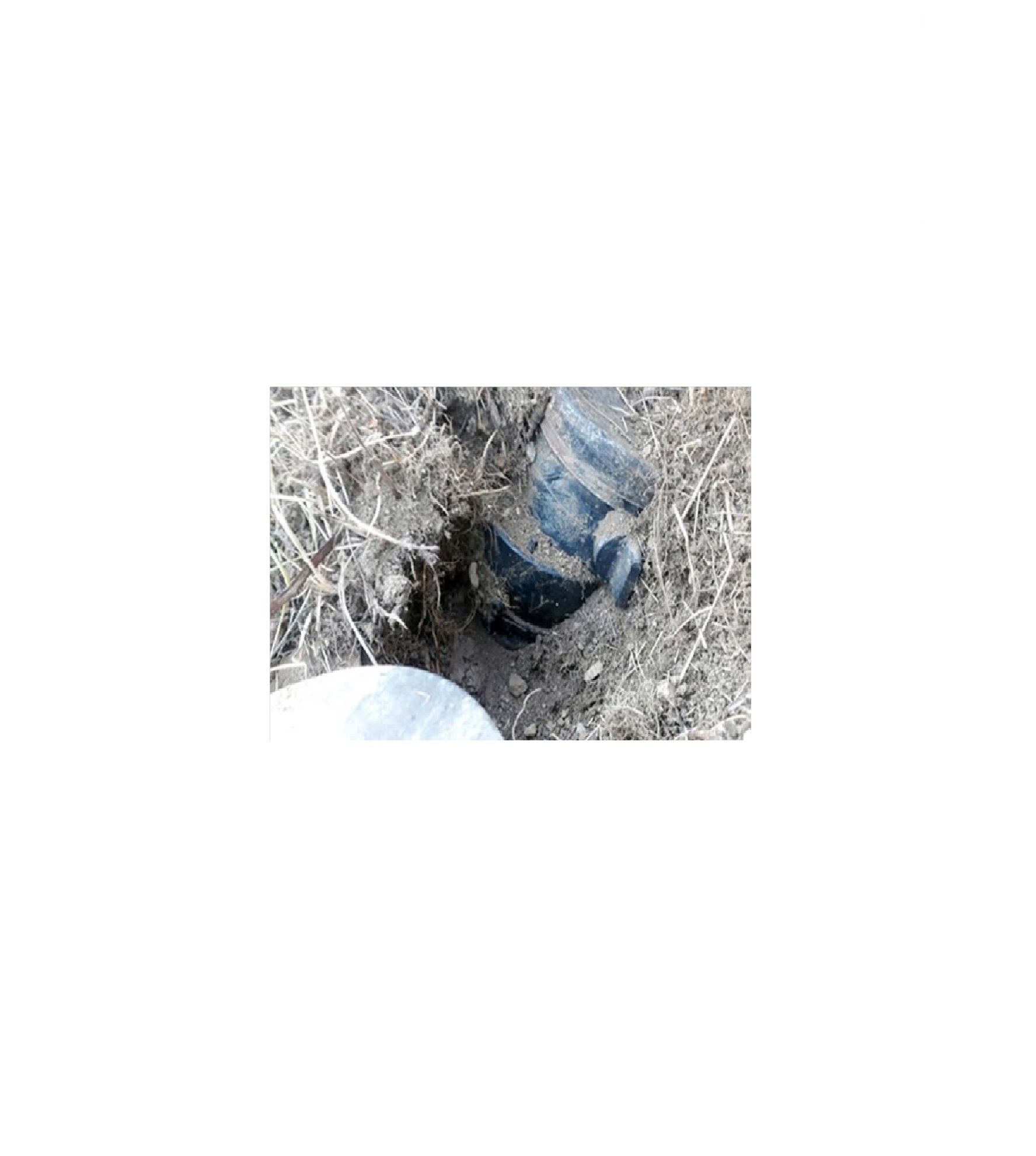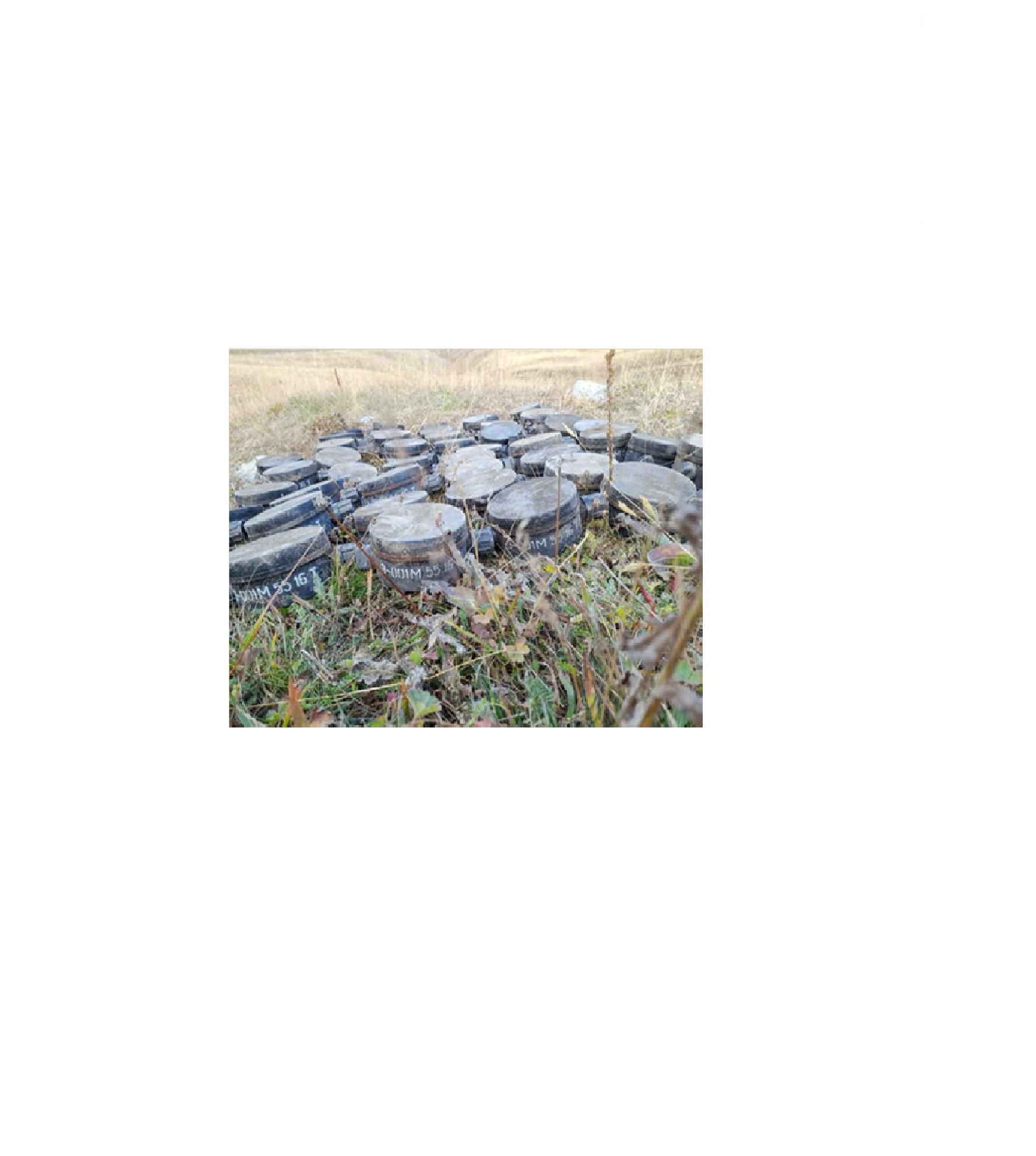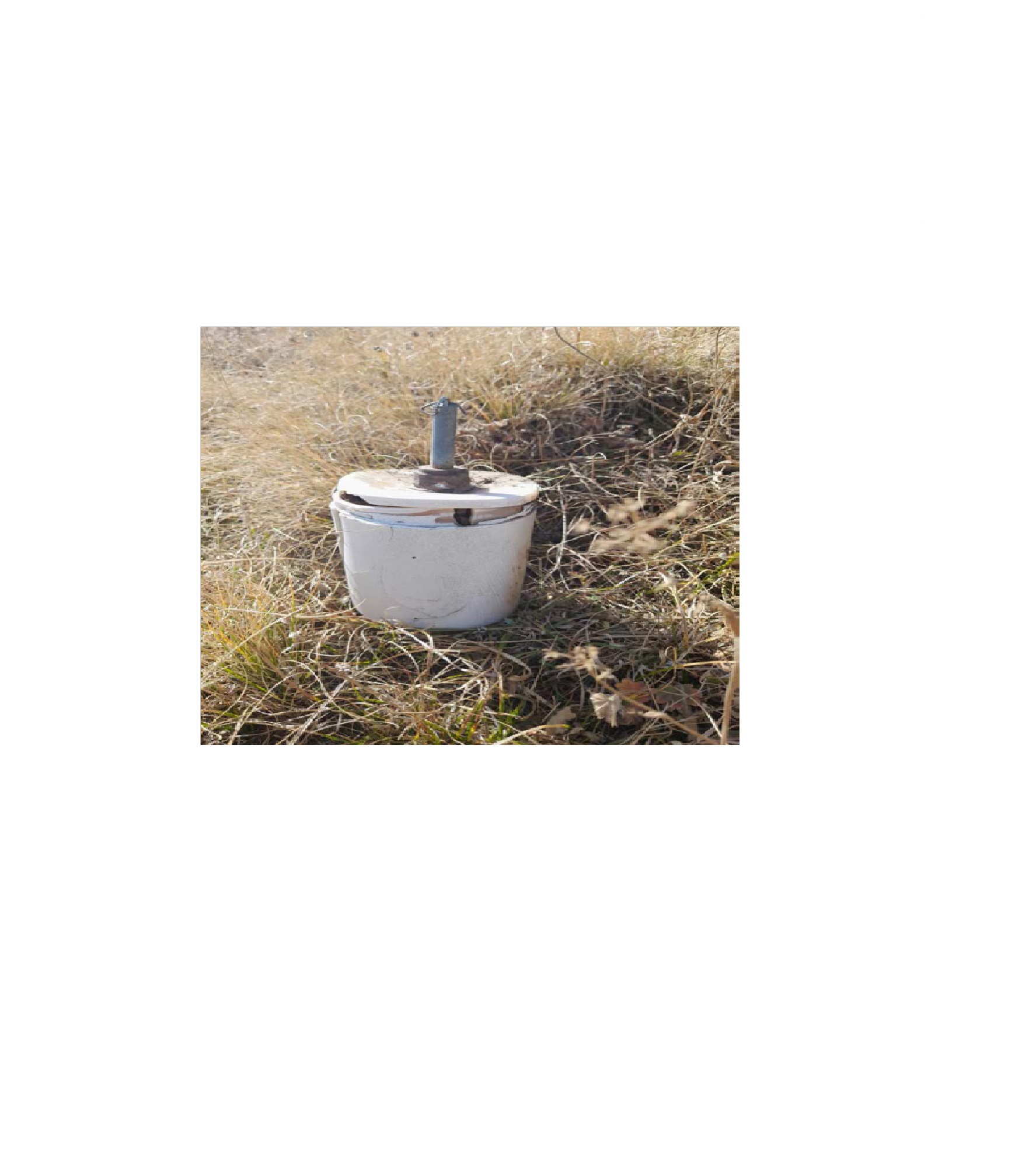Interim Report on continuing deployment of Armenia-produced landmines in the territory of Azerbaijan
Interim Report
on continuing deployment of Armenia-produced landmines in the territory of Azerbaijan
October 7, 2022
Baku, Azerbaijan
Introduction
The report sheds light on Armenia’s continuing deployment of landmines in the territory of Azerbaijan. Anti-personnel landmines deployed by Armenia’s forces and recently found in the course of demining operations in Azerbaijan’s Kalbajar and Lachin regions reveal that those landmines were produced in Armenia in 2021. It proceeds from this that those landmines were deployed by Armenia after the signing of 10 November 2020 Trilateral Statement which announced an end to all military activities between Armenia and Azerbaijan and obliged Armenia to withdraw remnants of its forces from the territory of Azerbaijan.
The fact of continuing landmine deployment further aggravates the humanitarian threat that landmines pose to civilians. Azerbaijan is one of the most landmine / explosive remnants of war (ERW) contaminated countries in the world due to the occupation by Armenia of its territories until 2020.
The fact of new landmine deployment attests to the continuation of aggressive policy pursued by the Armenian leadership. This, along with non-cooperation to locate landmines Armenia planted during the illegal occupation of the territories of Azerbaijan, constitutes a war crime and Armenia bears responsibility for it. Increasing number of mine victims creates humanitarian urgency that needs utmost attention.
This report will present visual evidence of landmines produced in Armenia and found in the course of demining operations as well as trap mines placed by Armenia’s forces in the residential areas (houses).
Newly-planted Armenia-produced landmines and trap mines
Azerbaijan is one of the most landmine / explosive remnants of war (ERW) contaminated countries in the world due to the occupation by Armenia of its territories until 2020. While the Government of Azerbaijan is engaged in largescale humanitarian demining operations to deal with this humanitarian threat, new facts confirm that Armenia continues to deploy landmines in the territory of Azerbaijan that further aggravates the humanitarian threat that landmines pose.
During humanitarian demining operations in the eastern parts of Kalbajar and Lachin regions of Azerbaijan in August 2022, vast minefields planted with “PMNE” anti-personnel mines – produced in Armenia in 2021 – a year after the signing of the 10 November Trilateral Statement.
These are the areas that have not been theatre of military operations in the course of the conflict.
On 16 August 2022, minefields of Armenia-produced “PMN-E” anti-personnel landmines were found near the “Birinji Ipak” settlement of Lachin and “Buzdukh” height of Kalbajar (visual evidence presented below).
According to the ongoing non-technical and technical surveys in the territories, there are minefields with estimated 40,000 landmines planted throughout 93 km-long part of Gamishdaghi – Saribaba height. Along with this, Armenianproduced PMN-E anti-personnel landmines recently planted by Armenia’s sabotage groups were found in Dashkasan region (visual evidence presented below).
The total number of PMN-E type landmines found in Dashkasan, Kalbajar and Lachin between 16 August – 05 October 2022 amounts to 3166. Of this, 1671 were found in Lachin, 935 in Kalbajar and 560 in Dashkasan. While PMN-E type constituted the majority of found landmines, other types of landmines found and neutralized included PMN-2, E-001 M and TM-62.
Apart from this, on October 3, trap mines installed by Armenian side were found in the houses in the Zabukh and Sus villages of the Lachin region. Trap mines included deploying Armenia-produced PMN-E landmines with hand grenades under it activated by trap wire were installed at the entrance of houses and courtyards (visual evidence presented below).
It should be noted that Armenia withdrew from Lachin, including its Zabukh and Sus villages on 26 August, 2022, in accordance with the 10 November Trilateral Statement signed by the leaders of Azerbaijan, Russian Federation and Armenia. No active military operation was conducted in these areas. Armenia installed these trap mines with the sole purpose of inflicting damage to the returning Azerbaijani civilians, which constitutes a grave war crime.
The producer of majority landmines and explosive ordnance found in the liberated territories of Azerbaijan is the Armenian company “Hayk-Meg” LLC, established in 1991. The company, which plays an important role in the militaryindustrial sphere of Armenia is based in Yerevan. “PMN-E”, “PMN-2”, “POMZ2”, “OZM-72”, “MON-50”, PFM-1 anti-personnel mines manufactured by the company were displayed at the “ArmHiTec-2016” defense industry exhibition, held in Armenia back in 2016.
Mine victims caused by Armenia’s landmine deployment
Armenia’s indiscriminate use of mines continues to cause superfluous injuries and unnecessary suffering to civilians. The humanitarian threat caused by mines creates humanitarian urgency that needs utmost attention.
The number of mine victims in the last 30 years stands at 3,336 (including 131 incidents by cluster munitions, 357 children, 38 women). Of this number, 257 (as of 03.10.2022) have become mine victims (44 killed and 213 wounded, including 9 children and youth, 1 woman, 3 media representatives) since the Trilateral Statement of November 10, 2020. The situation is aggravated by the fact that mines are indiscriminately deployed beyond the areas covered by the minefield records provided by Armenia while neither marked nor fenced.
New cases of trap mines made by Armenia’s forces in residential areas (houses) in Lachin region in August 2022 leaves no doubt that the aim is to inflict as many civilian casualties as possible.
Continuing landmine deployment is a violation of international law and Armenia’s obligations
Under the international pressure Armenia released some pre-2020 minefield records that provide information about 390,709 anti-tank and anti-personnel landmines as well as other explosive devices. These records constitute 5% of all the liberated areas and less than third of confirmed high threat areas reflected in UNMAS/UNDP Mine Action Assessment Report of Azerbaijan (December 2020). However, only some 25% of the minefield records provided by Armenia are proven to be reliable. It follows that only around 1,25% of the liberated territory has minefield records with reliable data.
Armenia’s Prime Minister publicly boasted that the information (at the time of the statement Armenia released about 200 thousand landmines) released to Azerbaijan was only a “tiny portion” of landmines planted by Armenia. Despite this acknowledgement, Armenia does not show any interest in further releasing all information about landmines it planted, cooperating to locate landmines it planted without proper documentation and burden-sharing on their removal. Efforts by an EU-appointed landmine expert to facilitate further release by Armenia of landmine information has not yielded any meaningful result.
Continuing landmine deployment by Armenia in Azerbaijan’s territory is contrary to Armenia’s international obligations, including those undertaken under the Trilateral Statement of 10 November 2020. Armenia had not withdrawn its armed forces from the territory of Azerbaijan, had not ceased military activities against the Republic of Azerbaijan. Instead, Armenia continues to build fortifications, military-engineering activities in the territory of Azerbaijan, and in this context, carries out large-scale landmine deployment therein.
Continuing landmine deployment coupled with non-cooperation in releasing pre2020 landmine records in violation of its obligations constitute a war crime. Under the International Humanitarian Law, Armenia continues to bear responsibility for the indiscriminate mine deploying, non-release of full information about deployed mines and victims of those landmines.
Such acts of Armenia neither serves stability nor advances peace and cooperation in the region. It rather attests to the continuation of aggressive policy pursued by the Armenian leadership.
Through continuing to deploy landmines Armenia also attempts to impede the realization of wide-ranging rehabilitation and reconstruction work and prevent the realization of inalienable right of the hundreds of thousands of IDPs to return to their homes in safety and dignity after almost 30 years of ethnic cleansing.
Newly-planted Armenia-produced landmines in Kalbajar and Lachin regions of Azerbaijan
Photo-1: Armenia-produced fougasse type, anti-personnel PMN-E mines found in the direction of Kalbajar district, Keshishkand residential area on 08.09.2022
Photo-2: 2021 Armenia-produced fougasse-type anti-personnel PMNE mine found by deminers unit of the Azerbaijani Army
Photo-3: Armenia-produced (2021), anti-personnel PMN-E mines, found by Azerbaijani Army's deminers unit from the direction of the Lachin district, Ikinji Ipek residential area on 17.08.2022
Photo-4: Armenia-produced anti-personnel PMN-E mines, fougasse-type, found in the direction of Kalbajar district, Qoturdagh mountain on 15.09.2022
Photo-5: The view from top of the Armenia-produced (2021) fougasse-type anti-personnel PMN-E mine found in the direction of Lachin region, Ikinji Ipek residential area on 16.08.2022
Photo-6: The view from the bottom of the 2021 Armenia-produced fougasse-type anti-personnel mine PMN-E found in the direction of Lachin district, Ikinji Ipek residential area on 16.08.2022
Photo-7: Armenia-produced (2021) anti-personnel PMN-E mines found in the direction of Lachin district, Ikinji Ipek residential area on 17.08.2022 168 pieces
Photo-8: Armenia-produced (2021) fugas-type anti-personnel PMN-E mines found in the direction of Lachin district, Ikinji Ipek residential area on 17.08.2022
Photo-9: Armenia-produced fougassetype anti-personnel PMN-E mines found in the direction of Lachin district, Ikinji Ipek residential area on 17.08.2022
Photo-10: Armenia-produced (2021) PMNE anti-personnel mines found by the deminers unit of Azerbaijani Army in the direction Lachin district, Ikinji Ipek residential area on 17.08.2022
Photo-11: Armenia-produced (2021), antipersonnel PMN-E mines found in the direction of Lachin district, Ikinji Ipek residential area on 17.08.2022
168 pieces
Photo-12: Armenia-produced antipersonnel PMN-E mines, found in the direction of Lachin district, Ikinji Ipek residential area on 16.08.2022
991 pieces
Photo-13: Armenia-produced (2021) fougass-type anti-personnel PMN-E mines found in the direction of Lachin region, Ikinji Ipek residential area on 16.08.2022
TRAP-MINES FOUND IN ZABUKH AND SUS VILLAGES OF LACHIN REGION OF AZERBAIJAN
Photo 14: An Armenia-produced PMN-type mine with a trap installed under the left corner of the basement entrance of the house located at the coordinates of 39º 35ʹ 24.2ʺ N 46º 32ʹ 43.7ʺ E in Zabukh village, Lachin region. The trap is an F-1 hand grenade with a firing pin and is set against the sapper who finds the mine.
Photo 15: POMZ 2 mine installed inside the door of the stall on the lower floor of the house located at the coordinates of 39º 35ʹ 16.6ʺ N 46º 32ʹ 48.5ʺ N in the village of Zabukh, Lachin region. The detonator is an MUV-2 type detonator manufactured in Armenia reinforced with an additional 1x 75g TNT canister and 1x40mm OQ-7 rifle grenade corp.
Photo 16: An RQ-42 hand grenade installed in the form of a trap mine on the entrance door in the roof part of the house located at the coordinates of 39º 37ʹ 36.7ʺ N 46º 30ʹ 48.6ʺ E in Sus village, Lachin region. The body of the grenade is surrounded by nails from the outside to strengthen the shrapnel effect and increase the danger distance. The stairs of the house were blown up to direct the potential victim to that entrance
Photo 17: An Armenian-produced PMN anti-personnel landmine installed at the entrance to the basement of a house located at the coordinates 39º 37ʹ 34.9ʺ N 46º 30ʹ 54.0ʺ E in Sus village, Lachin region. A piece of glass was placed on top of the mine hidden under the grass in order to cause more injures when it was triggered by shrapnel.
Photo 18: OZM-72 mine installed in a small ravine passage near a yard located in the village of Sus, Lachin region, at the coordinates 39º 37ʹ 37.6ʺ N 46º 30ʹ 49.1ʺ N. The mine is equipped with an Armenia-produced MUV-2 type explosive.
Photo 19: An improvised hand-made explosive device installed under the floor at the entrance to the interior of the house which starts without releasing from the installed pressure located at the coordinates 39º 37ʹ 34.1ʺ N 46º 30ʹ 53.6ʺ E in Sus village, Lachin region. The device was made by placing a UZRQM-type hand grenade detonator reinforced with a PVV-5 type plastic explosive in the explosive slot of a 120-mm OF-843 mortar shell. The floor at the entrance was removed and replaced with a closet door so that the unit would start without depressurizing when the door is lifted or stepped on both ends
ARMENİA-PRODUCED PMN-E MINES FOUND IN DASHKASAN REGION OF AZERBAIJAN
Photo-20: Anti-personnel, fougasse-type PMN-E mines, produced in Armenia in 2016, found in Dashkasan region, Bughdadagh mountain on 05.10.2022
108 pieces
Photo-21: Anti-personnel fougasse-type PMN-E mines, produced in Armenia in 2016, found in Dashkasan region, Bughdadagh mountain on 26.09.22
400 pieces
Photo-22: On 02.10.2022 Dashkasan r. Bugdadag d. Anti-personnel, fougasse-type PMN-E mines, produced in Armenia in 2016, found in Dashkasan region, Bughdadagh mountain on 02.10.2022 - One on another, 2 installed PMN-E mines, trap (surprise) version
Photo-23: Anti-personnel, fougasse-type PMN-E mines, produced in Armenia in 2016, found in Dashkasan region, Bughdadagh mountain on 03.10.2022
52 pieces
Photo-24: 4 OZM-72 anti-personnel shrapnel mines produced in Armenia and found in the direction of Dashkasan district, Bughdadagh mountain on 06.10.2022

